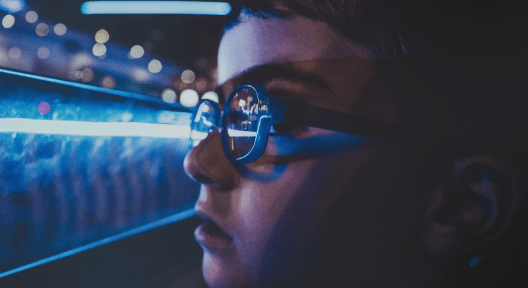Blue light : All you need to know
What is Blue Light?
Blue light is part of the visible light spectrum with a wave length range of 380-500 nano-meters (0.000000001 m). Blue light is located on the shorter wave length of the visible light spectrum, therefore blue light caries higher amount of energy that according to new findings can cause extensive and long term damages to the eye.
Key Takeaways
- Nowadays, humans are exposed to blue light sources substantially more than allowed, which can negatively impact their health.
- Despite the novelty of the research, studies show that natural blue light is essential for us to have normal sleep and wake cycle.
Overexposure
Previously, human eyes were exposed to blue light only as a part of the visible light spectrum that naturally exists in sunlight which is essential for us to function normally. Today, due to the substantial advancement in technology, humans are exposed to additional sources of blue light that is emitted by most electronic screens and LED lights. Massive integration of modern communication devices and computers into our daily activities may cause overexposure and subsequent damages to the eye and other disorders arising from overexposure to blue light.
Possible harmful effects of overexposure to Blue Light
Most of us are familiar with another natural part of sunlight U.V (Ultraviolet) light which positively help regulate many of our body functions such as production of vitamin D, which is essential in maintaining healthy skin and a positive mood. Overexposure to U.V on the other hand, is also well documented and most of us are aware of its negative effects such as skin burns, eye cataract, snow blindness and different types of cancer. Due to this awareness, today most of eyeglasses and sunglasses lenses materials and coatings provide protection from U.V light.
Blue light research is a relatively new, but there are already available studies showing that exposure to blue light is essential in creating normal circadian rhythm in mammals. The circadian rhythm mechanism is related to production of melanopsin, a protein that is being produced in specific photosensitive cells located in the retina. As such, the natural blue light is essential for us to have normal sleep and wake cycles.
As mentioned above modern life activities may be the source of overexposure to blue light and can cause severe health disorders that are listed below, but are not limited to:

Digital Eye Strain
The first, and most noticeable health issue associated with over exposure to blue light, is Digital Eye Strain that can cause blurry vision, headaches, dry eyes, and even neck and back pains. These symptoms have been increasingly reported, and today digital eyestrain became more known as the number one issue associated with computer work.
Disruptions of sleeping patterns
Excessive exposure to blue light may disrupt a normal production of melanopsin which is required to maintain regular wake and sleep cycles. Our eyes are made to respond to a normal 24 hour cycle and serve as the primary conduit of light signals to the brain. Exposure for longer periods of blue light than our brain perceive as normal, can increase the time it takes us to fall asleep and can also result in abnormal sleep cycles.

Age-related Macular Degeneration symptoms
Prolonged exposure of the retina to extensive blue light may cause damage to our light sensitive retina cells which will result in symptoms similar to age-related macular degeneration (AMD) and cause severe vision deterioration.
How to protect your eyes from overexposure to blue light?
It is clear that as humans living in this technological era, one can hardly avoid overexposure to the increasing amounts of blue light. It was found that users of blue light blocking eyeglasses lenses reduce digital eyestrain by half, and could be rightfully assumed that other related negative health effects of overexposure to blue Light will be reduced as well.
